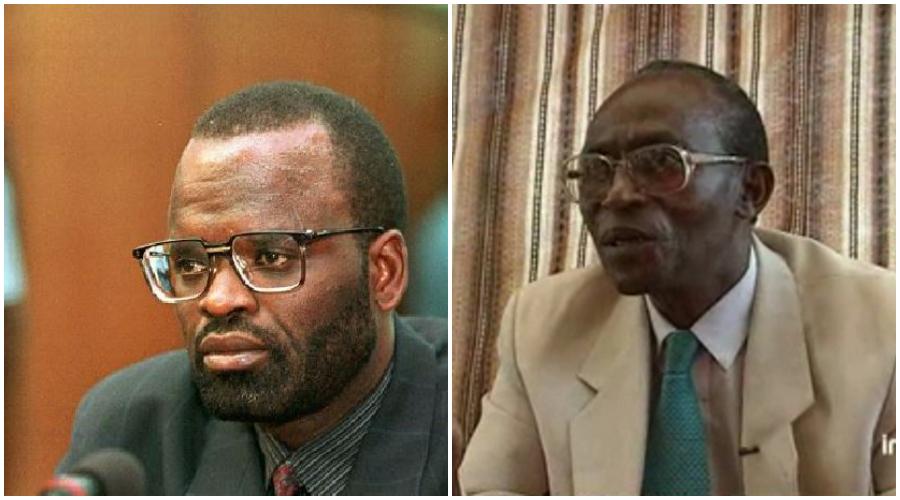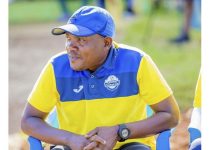Africa-Press – Rwanda. Towards the end of 1994, the genocidal armed forces and their ‘interim’ government in exile, were against the wall. Although they had reconstituted their forces, retrained them and rearmed, with considerable support from friendly African heads of state, backed by the then French government of the day, major problems had arisen.
First, the Sindikubwabo – Kambanda government in exile was dysfunctional. Many members had abandoned the camps in Zaire for a more luxurious refuge elsewhere.
The funds looted from Rwanda or collected through extensive fundraising had been embezzled and diverted to leaders’ private accounts. The population, held hostage in the refugee camps were becoming restless, and, most worryingly, the military and political leaders’ reputation stank to high heaven for leading the genocide against the Tutsi, and were an embarrassment to their international backers for this reason.
It was under these conditions that Augustin Bizimungu, commander of the Ex-FAR and associated militia convened a week-long conference in GOMA, in early September 1994, to analyze why they had been defeated, and lay a strategy for the recapture of power. Soon after the meeting, Bizimungu demanded for an immediate ministerial reshuffle which promptly happened to no great change.
In a series of later meetings held in Bukavu and at Mugunga camp, Bizimungu and Bagosora lost patience with the political leadership and decided to depose the government in exile and appoint a new politico-military group to represent the refugees. This group was to be called the Rally for the Return of Refugees and Democracy in Rwanda (RDR).
This organization, subsequently headed by a certain Victoire Ingabire Umuhoza had, as its primary aim, in the understanding of Bizimungu and Bagosora, to rebrand the Ex-FAR as a legitimate political movement, a restyling of the genocidal ‘Akazu’. The message was that the millions then held hostage in glossy exile were the real Rwandans who should be in power in Kigali, that the genocide, or what they called the ‘past horrors’ should be forgotten and forgiven, and that the real villains were the RPF, foreign invaders who had no homeland – as Bagosora so memorably put it – and no business being in Rwanda.
In this context, Democracy for the RDR was seen in purely ethic terms and like PARMEHUTU and MRND(D)/CDR before it, was seen as the exclusive preserve of the (Hutu) majority, not the whole population. The RDR pushed for what it called, ‘Truth about the Rwandan tragedy’.
This truth as the group understood it, was most explicitly stated in the infamous document released by one of its founders, Theoneste Bagosora, in Yaoundé, Cameroon, in 1995.
The document is an apologia for genocide, and a rant against inability to complete the extermination, by a man later convicted for, and incarcerated for genocide by an International Tribunal.
Navigating the treacherous waters of camouflaged extremism has not been a walk in the park for the inheritors of the PARMEHUTU, MRND (D), CDR political mantle. The failure of the genocide project and their politico-military defeat by the RPF has been a bitter pill to swallow.
The undeniable socio-economic benefits of the RPF-led post-genocide inclusive governance philosophy have exposed the bankruptcy of the murderous ethno-regionalist, exclusionist policies of their political godfathers.
Therefore, their brand of ‘political opposition’ has been reduced to genocide negation, revision, and denial in the face of heavy national and some international opprobrium for the murderous sectarianism that plunged Rwanda into the genocide against the Tutsi in 1994, the RDR was forced to constantly rebrand.
It turned into FDU/ Inkingi in 1998, and most recently, into Dalfa/Umurinzi. The bewildering soup of acronyms and names are an attempt to obfuscate and hide the fact that the vision of the leaders of the group and movement remains protection of the criminals and masterminds of the genocide against the Tutsi, and paradoxically reclaim for them, the political posts that the Arusha accords of 1993 had anticipated.
Part of the challenge for the RDR and its successor organizations has been the regionalism that partly underlay its formation. In mid-1995, at the Legacy hotel in Nairobi, senior clergy including former Anglican Archbishop Augustin Nshamihigo and Bishop Aaron Ruhumuliza of the Free Methodist Church were called in to mediate between Jean Kambanda and his former ‘southern regime’ ministers, and a Northern clique allied to the Akazu that had spearheaded the genocide and were the driving force behind the new organization. Akazu won but the row never ended and continued to simmer on in RDR and successor organizations. This is not surprising since murderous sectarianism is in the foundational DNA of these groups. As the French say, ‘Plus ca change, plus c’est la même chose’, continuous rebranding notwithstanding.
For More News And Analysis About Rwanda Follow Africa-Press






